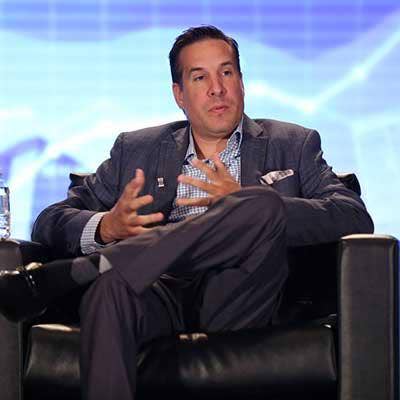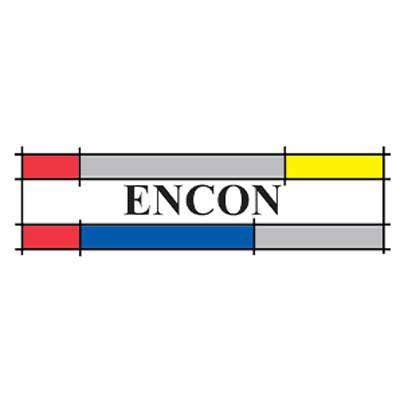IoT Solution Provider Spotlight: Three Different Journeys That All Lead To IoT Success

How Are Solution Providers Getting Ahead Of The IoT Game?
Three solution providers are sharing their experiences about how they successfully began to deploy Internet of Things projects.
Dimension Data, a Johannesburg, South Africa-based company, has been deploying IoT solutions globally – from connecting bikes to share rider information on the Tour De France to a Connected Conservation project in Africa enabling landowners to prevent rhino poaching.
Ocean Township, N.J.-based Encon Mechanical, meanwhile, has been focusing its IoT efforts in the smart building space, looking to connect facilities so that facility managers and tenants can use that information for productivity and efficiency.
And finally, CB Technologies, an Orange, Calif.-based solution provider, has been transforming its business to keep up with the services-driven sales cycle behind IoT and helping customers gain visibility into and manage their connected devices.
Lawrence Van Deusen of Dimension Data, David Indursky of Encon Mechanical, and Kelly Ireland of CB Technologies talked about the IoT opportunity at IoT Connex Wednesday, a virtual conference hosted by CRN parent The Channel Company.

How have you transformed your company to keep up with the skills and sales acumen needed for IoT?
Lawrence Van Deusen, Dimension Data
Like all service providers and systems integrators, we’ve been on a journey from being a VAR to a reseller to a [systems integrator] to a [managed service provider] – so with regards to IoT, it crosses all boundaries around network, data, security – and we have to have a business that provides the digital infrastructure, the analytics, the platforms, the capabilities.
So as we continue to grow out our capabilities to provide these technologies to the clients to transform, we need to change the ways in which we work.

How have you transformed your company to keep up with the skills and sales acumen needed for IoT?
David Indursky, Encon Mechanical
I grew up in the air conditioning trade – for me, it’s a second-generation business – my father did projects where he would take schools and do smart things with them before computers existed. We became a systems integrator as the world of technology has evolved over the years, and if you want to remain relevant in this space you need to educate yourself on an everyday basis.
We’re probably about 70 percent construction, 15 [percent] to 20 percent service and the rest in building automation. We’re working on growing the building automation component as opposed to other the divisions right now because we feel that there is the most growth in that space.
How have you transformed your company to keep up with the skills and sales acumen needed for IoT?
Kelly Ireland, CB Technologies
CBT has gone through a huge transformation … everything was going more into engineered solutions, much more strategic services versus transactional, and we all know that’s something that’s been espoused for the last four to five years. You have to transition, you have to transform – if you don’t, you’re dead.
And definitely the services side of it is huge, where before it might be 15 percent of what we’re doing, I see it transitioning to 50 percent, even up to 75 percent depending on what the solution is.
We started hiring engineers, more on the engineering and technology side, and started interviewing customers to see what they thought were there issues … and starting to vet partners as well as technologies to see what we could use for these solutions. It’s going to take more integration and customization, and what we’re seeing is that out of interviewing 80 different clients … they all had a different take on it.

What were the first steps you took in approaching customers to deploy IoT solutions?
Dimension Data's Van Deusen
It has to start with a business plan, you need to understand what types of services you’re going to offer to the market because it is a very wide portfolio of things that you can talk about – things around connectivity and wireless, location services, and some of the technology that clients were looking to deploy as part of their infrastructure.
I think you have to look at the verticals and the segmentation of what’s happening right now – which markets are being disrupted. If you have existing segmentation or relationships with those clients already … then it makes sense to start looking at ways you can partner with other companies, like vendors that are building solutions, and build on that capability, so that’s one potential route to market.
The other one is the areas where there’s less competition, so we look at those areas in which we had competency and align it around analytics and develop out mobility practices around applications to complement that.

What were the first steps you took in approaching customers to deploy IoT solutions?
Encon Mechanical's Indursky
When we would go to buildings and say, ’We want to connect remotely,’ their first red flag would go up and they’d say, ’Our IT people would never let that happen.’ And we couldn’t speak their language. They would use words and terminologies and wishes and wants that were well outside our vocabulary, so the only way we could get into it was by hiring the right people, have the IT people sit across from the IT customers and make sure they were comfortable with what we wanted to do.
Once they open up the firewalls or ports that we need to be connected, they see the value that we could help them with, so we know if the building has a problem long before they do. So we’re going to the IT schools now, places where we’re being trained in computers instead of air conditioning.
What were the first steps you took in approaching customers to deploy IoT solutions?
CB Technologies' Ireland
We jumped into IoT about two years ago, it came out of HPE coming to us with a problem, saying, ’This is what we’re seeing in the market, can you help us build out the solution?’ There’s been starts and stops because there’s so much change in the industry right now, there’s so much different technology, there’s so many different approaches you can take to it.
We started in oil and gas, that’s kind of grown out into utilities and even into manufacturing, so we’ve had to integrate a multitude of partners to join in with us, having us learn what it’s all about and integrate us all together.

What is your main target market for IoT and what’s an example of a solution you have been working on in that market?
Dimension Data's Van Deusen
We’re doing a lot in retail, health care – we talk to health-care organizations every day, and that’s one reason why we built the health-care practice, to have health-care professionals who come to the IT industry and really relate to those health-care physicians. We have more challenges around the number of patients and doctors and the facilities they can use – we want to preserve the dignity, and also improve the patient experience, so there’s ways technology can address some of those needs in the health-care vertical.

What is your main target market for IoT and what’s an example of a solution you have been working on in that market?
Encon Mechanical's Indursky
We do a lot of work in surgical centers … if the surgeon isn’t happy with the temperature or pressure of the [operating room] when they get into it, they just can’t do the operation. We should know that hours before that facility opens up, as long as we have connectivity to the space.
We don’t have the resources to be the experts in every trade. … I believe that partnerships are the only way we can get there.
What is your main target market for IoT and what’s an example of a solution you have been working on in that market?
CB Technologies' Ireland
One of our largest opportunities right now is with an engineering firm, and what they did is they saw our solution at a conference, looked at it and said, ’Wow, it’s not in line with what we do, but it’s certainly an add-on that we want to showcase because it gives our clients that asset management that they need.’
We’re helping them locate assets where they don’t know where they are – I’d say 99 percent of companies out there don’t have control of their asset information. Let’s say telco or utilities … they might know where 80 percent are, but they don’t know where the rest are. So crawling through their databases, looking at [geographic information system] information, bringing that all together in a single database, and using it and integrating information into it – we can give them a gap analysis that says, 'Here’s how many you should have, here’s how many you know where they are, and here’s where the others are.'